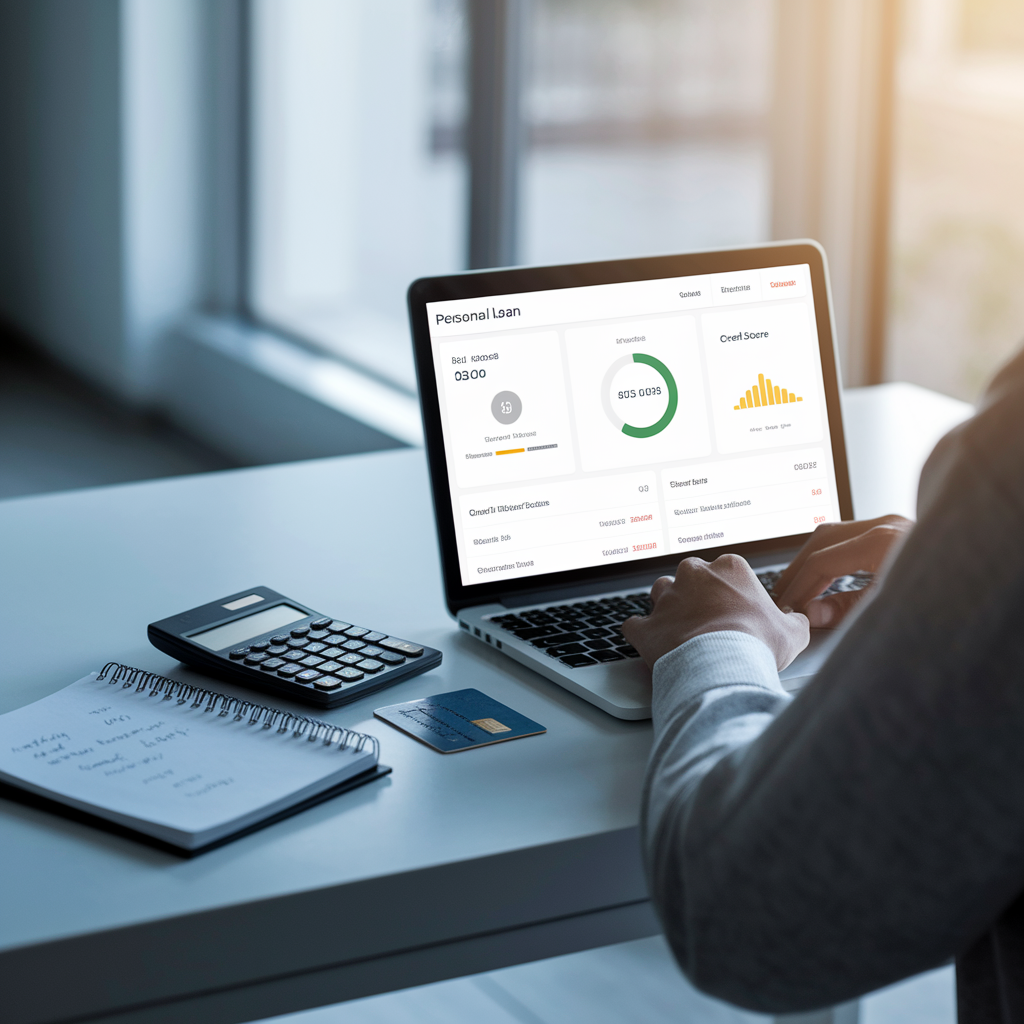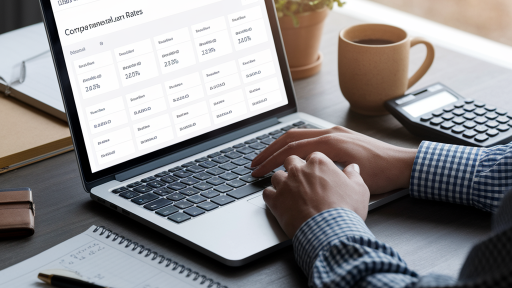Navigating the world of lending can feel like an uphill battle when your credit score is less than perfect. Traditional banks often have strict criteria, making it seem like the doors are closed. This can be incredibly frustrating, especially when you need access to funds for an emergency, debt consolidation, or a significant purchase.
The good news is that a low credit score doesn’t mean you’re out of options. A growing market of lenders specializes in providing financial products to individuals with challenging credit histories. This guide will walk you through the best personal loan avenues available, helping you understand how to find a reputable lender and secure the financing you need without falling into predatory traps.
Understanding Bad Credit and Its Impact on Loans
Before diving into loan options, it’s crucial to understand what “bad credit” means and why it matters to lenders. Credit scores are numerical representations of your creditworthiness, and they give lenders a quick snapshot of the risk associated with lending you money. A lower score signals a higher risk, which influences the types of loans and terms you’ll be offered.
What Is Considered a Bad Credit Score?
While each lender and credit scoring model can differ slightly, scores are generally categorized along these lines. The most common model, FICO, uses a range from 300 to 850.
- Exceptional: 800 – 850
- Very Good: 740 – 799
- Good: 670 – 739
- Fair: 580 – 669
- Poor (Bad Credit): 300 – 579
If your score falls in the “Fair” or “Poor” range, you are typically considered a subprime borrower. This means you’ll likely face higher interest rates and more stringent terms than someone with a good or excellent credit score.
Why Lenders See Bad Credit as High Risk
Lenders use your credit history to predict future behavior. A low score often results from past financial difficulties, such as late payments, defaults, or high credit card balances. To a lender, this history suggests a greater chance that you might struggle to repay a new loan on time. To compensate for this increased risk, they charge higher Annual Percentage Rates (APRs) and may offer smaller loan amounts or shorter repayment periods.
Key Types of Loans for Borrowers with Poor Credit
When you have a low credit score, your loan options are more specialized. Understanding the differences between them is key to choosing the right one for your financial situation. Here are the most common types you’ll encounter.
Unsecured Personal Loans
These are the most common type of personal loan. They are “unsecured” because they don’t require you to put up any collateral, like your car or house. The lender approves the loan based solely on your creditworthiness and financial information. For borrowers with bad credit, these loans are available but will almost always come with higher interest rates compared to secured loans.
Secured Personal Loans
A secured loan requires you to pledge an asset as collateral. This could be a savings account, a vehicle, or another valuable item. Because the collateral reduces the lender’s risk—they can seize the asset if you default—it’s often easier to get approved for a secured loan with bad credit. You may also qualify for a larger loan amount and a lower interest rate than you would with an unsecured option.
Credit Union Loans (PALs)
Credit unions are non-profit financial institutions that often offer more flexible lending criteria than big banks. Some offer Payday Alternative Loans (PALs), which are small, short-term loans designed to be a more affordable option than traditional payday loans. To qualify, you typically need to be a member of the credit union for a certain period, usually at least one month.
Co-signer Loans
If you have a friend or family member with a strong credit history who is willing to co-sign for you, it can significantly improve your chances of approval. A co-signer legally agrees to take responsibility for repaying the debt if you fail to do so. Their good credit score provides security to the lender, often resulting in a better interest rate and more favorable terms.
Comparing Top Lender Categories for Bad Credit
Instead of focusing on a single company, which can change its offerings, it’s more effective to understand the types of lenders that serve the subprime market. Each has its own set of pros and cons.
| Lender Type | Typical APR Range | Common Loan Amounts | Best For |
|---|---|---|---|
| Online Lenders | 18% – 36% (or higher) | $1,000 – $50,000 | Fast funding and convenient online applications. |
| Credit Unions | 10% – 18% (PALs capped at 28%) | $500 – $15,000 | Borrowers seeking lower interest rates and a personal relationship. |
| Peer-to-Peer (P2P) Platforms | 15% – 36% | $2,000 – $40,000 | Those who may not qualify with traditional lenders but have a compelling story. |
| Secured Loan Lenders | 8% – 25% | Varies based on collateral value | Borrowers with valuable assets to use as collateral. |
Actionable Steps to Improve Your Approval Odds
Even with a low score, you can take steps to present yourself as a more attractive borrower. Proactively managing your financial profile before you apply can make a significant difference.
1. Check and Correct Your Credit Report
Before applying, get free copies of your credit reports from all three major bureaus (Equifax, Experian, and TransUnion). Review them carefully for any errors, such as incorrect late payments or accounts that don’t belong to you. Disputing and correcting inaccuracies can sometimes provide a quick boost to your score.
2. Gather Proof of Stable Income
Lenders want to see that you have a reliable way to make your payments. Your credit score is a reflection of your past, but your income shows your current ability to handle new debt. Prepare recent pay stubs, bank statements, and tax returns to demonstrate a steady income stream. This is especially important if you are self-employed.
3. Calculate Your Debt-to-Income (DTI) Ratio
Your DTI ratio is the percentage of your gross monthly income that goes toward paying your monthly debt obligations. Lenders use it to assess your capacity to take on more debt. A lower DTI is always better. You can improve it by paying down existing debts or increasing your income. Most lenders prefer a DTI below 43%.
4. Prequalify with Multiple Lenders
Most online lenders offer a prequalification process that allows you to see potential rates and terms without impacting your credit score. This involves a “soft” credit check. By prequalifying with several lenders, you can compare offers and choose the most affordable one before committing to a formal application, which requires a “hard” credit inquiry.
Watch Out for Predatory Lending and Scams
The subprime lending market can unfortunately attract scammers and predatory lenders who take advantage of desperate borrowers. It’s vital to be vigilant and recognize the warning signs.
- “Guaranteed” Approval: No legitimate lender can guarantee approval before reviewing your financial information. This is a major red flag for a scam.
- Upfront Fees: Lenders may charge an origination fee, but it’s typically deducted from the loan proceeds. Demands for an upfront “insurance” or “processing” fee before you receive the loan are illegal and a clear sign of fraud.
- High-Pressure Tactics: Be wary of lenders who pressure you to make an immediate decision or offer a deal that “expires in the next hour.” Take your time to read and understand the loan agreement.
- No Credit Check Promises: While some lenders focus less on credit, those that promise “no credit check” at all are often payday lenders that charge astronomical interest rates, sometimes exceeding 400% APR. These can trap you in a cycle of debt. For more information on identifying predatory practices, you can consult resources from the Federal Trade Commission (FTC).
Alternatives to Consider Before Taking a Loan
A personal loan isn’t always the right or only answer. Depending on your situation, one of these alternatives might be a better fit and could help you avoid taking on new debt.
Credit-Builder Loans
If your need for cash isn’t immediate, a credit-builder loan can be a fantastic tool. With this type of loan, the lender deposits the borrowed amount into a locked savings account. You make regular monthly payments, which are reported to the credit bureaus. Once you’ve paid the loan in full, the funds are released to you. It’s a forced savings plan that simultaneously builds a positive payment history.
“Buy Now, Pay Later” (BNPL)
For a specific large purchase, services like Klarna or Afterpay allow you to split the cost into several smaller, interest-free installments. Most BNPL providers only perform a soft credit check, making them accessible to those with lower scores. However, be sure you can make the payments, as missed payments can incur fees and harm your credit.
Negotiating with Creditors
If you’re seeking a loan for debt consolidation, try contacting your existing creditors first. They may be willing to negotiate a hardship plan, lower your interest rate, or settle the debt for a lower amount. This can be a more direct way to solve the underlying problem without a new loan. There are many nonprofit credit counseling agencies that can help you with this process.
Conclusion: Finding the Right Path Forward
Having a bad credit score presents challenges, but it does not eliminate your ability to secure financing. The key is to be a savvy, informed borrower. By understanding the types of loans available, comparing different lender categories, and taking steps to strengthen your application, you can find a responsible solution that meets your needs.
Always prioritize lenders who are transparent about their rates and fees, and never feel pressured into a decision. A loan should be a tool to improve your financial standing, not a trap that pushes you further into debt. By doing your homework and carefully evaluating your options, you can confidently navigate the market. For more in-depth guidance on what to look for, the Consumer Financial Protection Bureau provides extensive resources on what you should know about personal loan options for bad credit scores.





